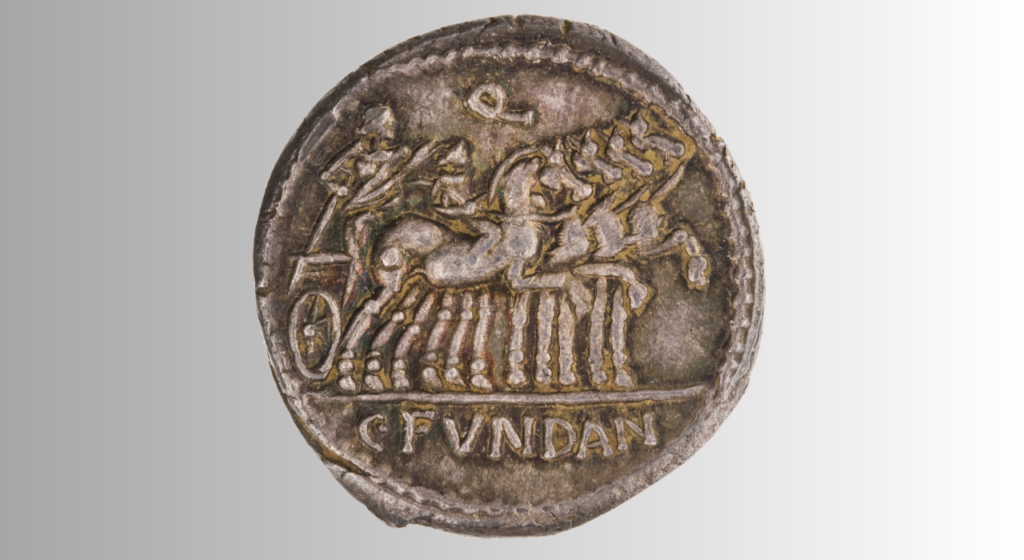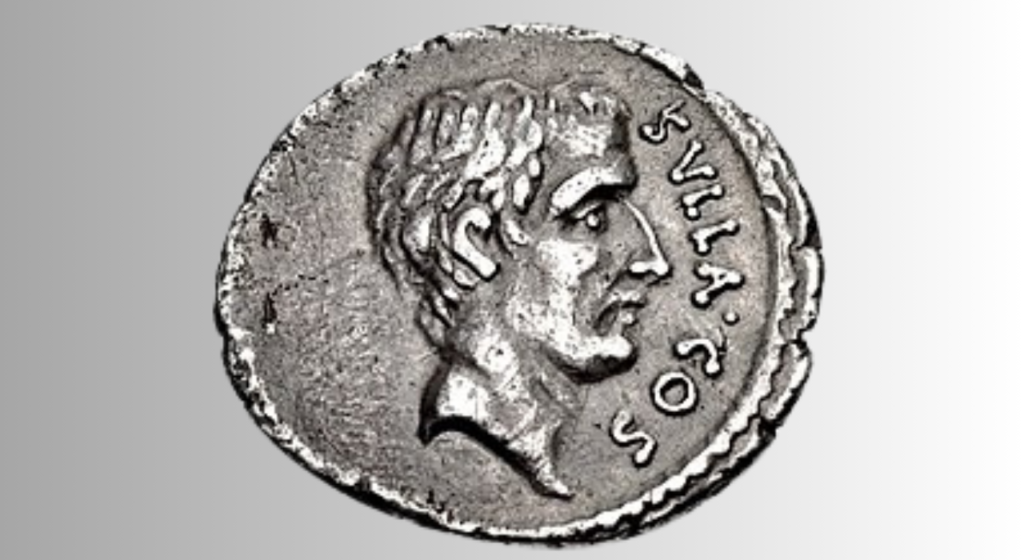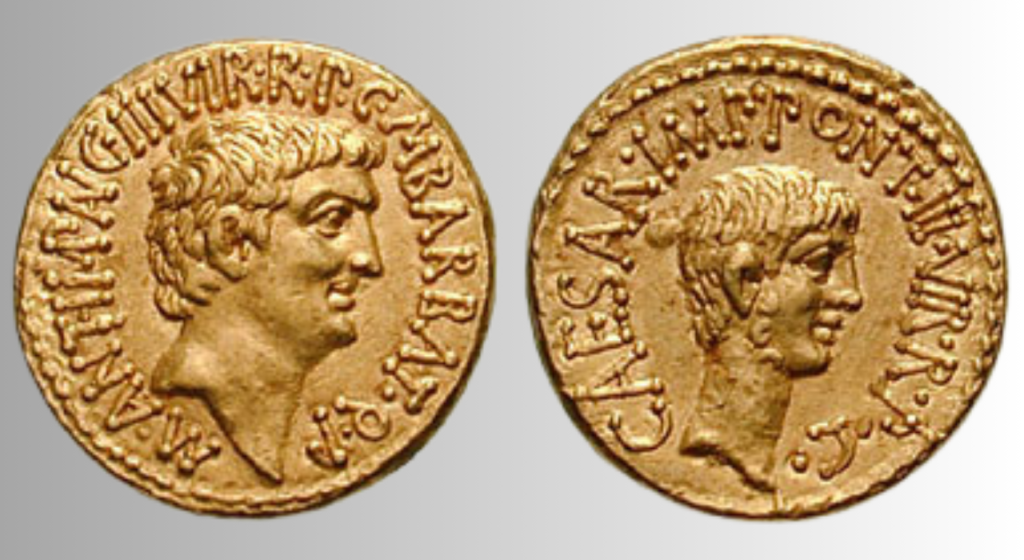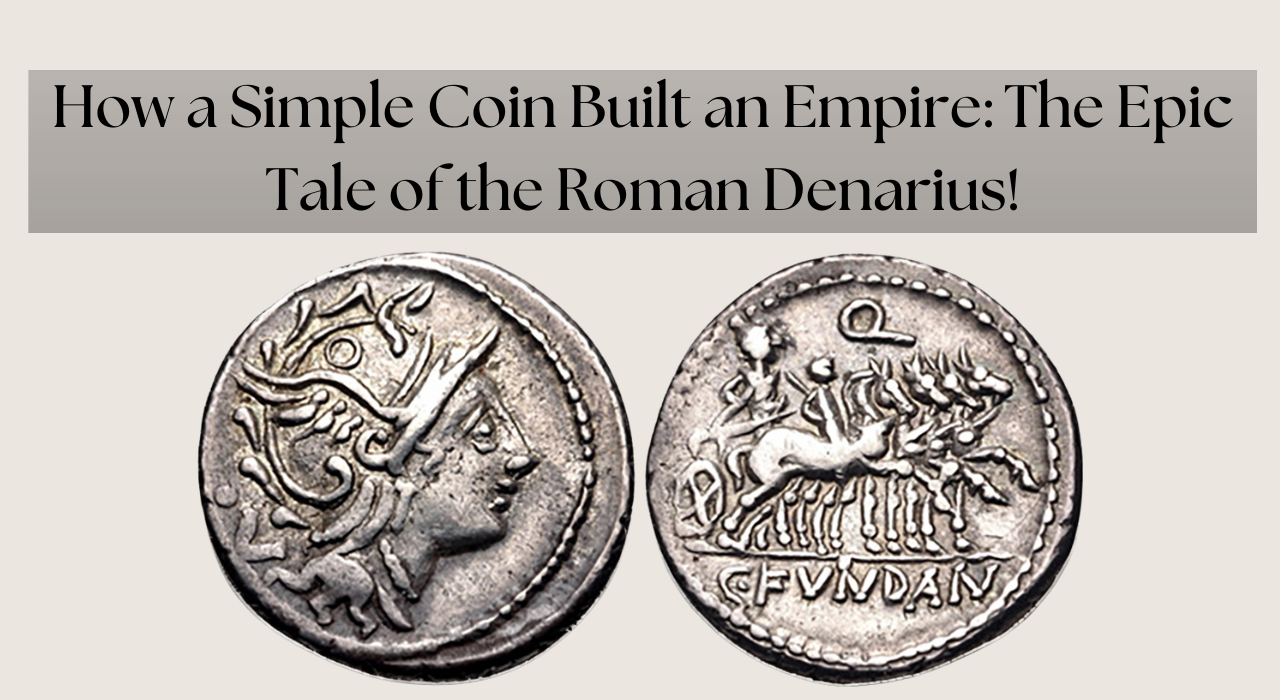The Roman Republican denarius underwent significant changes during the period between 105 BCE and 50 BCE. This era marked a shift in the symbols and designs of the coins, reflecting the political climate and rise of powerful individuals striving for personal authority.
The denarius, once a symbol of the Roman Republic’s power, gradually evolved into a tool for political expression and personal glorification.
During this time, the “Head of Roma” design, which had been a hallmark of the denarius, almost disappeared. From 214 BCE to 120 BCE, the head of Roma had been a constant feature on Roman coins, symbolizing the strength of the Roman state.
However, as Rome entered an era dominated by influential figures, the coinage reflected this transformation. Out of 130 moneyers known to have been active during this period, only 10 continued using the “Head of Roma” design, while the rest depicted images connected to the ruling oligarchs and other powerful individuals.
The images began to highlight the rise of strongmen—individuals who sought personal power, marking the transition from a republic ruled by many to one influenced by the few.
The denarius became an emblem of the shifting political landscape, mirroring the ambitions and achievements of Rome’s most powerful leaders.
8 Jaw-Dropping Commemorative Coins You’ll Want to See Right Now – Beauty That Belongs in a Museum!
Gaius Marius and His Legacy

One of the most prominent figures of this time was Gaius Marius, a Roman general whose military victories brought him immense fame. He led Rome to triumph in the Cimbrian War (113–101 BCE) and the Jugurthine War (112–106 BCE), earning him multiple terms as Consul.
His victories secured his position as one of Rome’s foremost military leaders. In 107 BCE, he was first elected as Consul, and due to his military prowess, he was re-elected five times consecutively between 104 and 100 BCE.
Marius was honored with triumphs for each of his victories, and his image became a fixture on Roman coins. A notable example is a denarius minted by Caius Fundanius in 101 BCE to commemorate Marius’ second triumph.
The reverse of the coin depicted a Triumphator (someone awarded a triumph) riding a four-horse chariot, or quadriga, with a youth on one of the horses, holding a laurel branch. Many scholars believe the Triumphator represents Marius, while the youth symbolizes his son.
If this interpretation is correct, it would be one of the earliest instances of a living human being depicted on an official Roman coin.
This coin, significant for its connection to Marius, was auctioned in July 2019 for $160, against an estimate of $100. It captures an important moment in Rome’s history, where the personal achievements of generals like Marius were immortalized on currency.
The Legendary 1913 Nickel: Unraveling the Mystery of a Rare Coin
Lucius Cornelius Sulla: The Rival Who Shaped Rome

Marius’ successes, however, did not go uncontested. One of his subordinates, Lucius Cornelius Sulla, would rise to even greater power. Sulla, a member of the illustrious Cornelia family, achieved great success both in the Jugurthine War and the Cimbrian War, cementing his reputation as a formidable military leader.
Sulla’s rivalry with Marius sparked one of Rome’s earliest civil wars, which ultimately led to Sulla’s victory. After Marius’ death in 86 BCE, Sulla returned from his campaigns in Greece, eventually seizing control of Rome.
During his rule, Sulla reshaped Roman politics, ruling as dictator and implementing extensive reforms to return the state to what he believed were its traditional republican values.
Coins during Sulla’s reign reflected his power and achievements. In 84 or 83 BCE, a denarius was minted under his command, featuring the goddess Venus on the obverse and military trophies on the reverse.
The design emphasized his authority, with Venus symbolizing Sulla’s divine protection, and the trophies celebrating his numerous military victories.
A coin issued in 82 BCE by Lucius Manlius Torquatus, one of Sulla’s proquaestors (chief financial officers), further celebrated Sulla’s victories. It depicted Sulla in a quadriga, crowned by Victory, a design reminiscent of Marius’ triumphal coin.
This denarius sold for $875 in September 2006, highlighting the lasting influence of Sulla on Roman coinage and politics.
Sulla’s reign as dictator lasted for two years, during which he executed thousands of his political enemies. His dictatorship was unprecedented, as Roman law dictated that a dictatorship should last no more than six months. Sulla, however, maintained control far longer, showing that his power was absolute.
He eventually resigned in 80 BCE, claiming his reforms had restored the Republic, and died two years later, leaving a profound mark on Roman history.
The $32,000 Coin That Was Hiding in a Toffee Tin: You Have to See This!
The Rise of the First Triumvirate

In the years following Sulla’s resignation, Roman politics became a battleground of alliances and power struggles. Fearing the rise of another strongman like Sulla, the Roman Senate formed shifting alliances to prevent any single individual from seizing too much power.
Despite these efforts, three men would eventually come together to form a political alliance that would reshape Rome forever.
The First Triumvirate, formed in 60 BCE, consisted of Gaius Julius Caesar, Pompey the Great, and Marcus Licinius Crassus. Each man brought different strengths to the alliance: Caesar’s political acumen, Pompey’s military success, and Crassus’ immense wealth.
This unofficial alliance allowed the three men to dominate Roman politics, with Caesar securing the consulship in 59 BCE.
The Triumvirate was cemented by Caesar’s marriage alliance with Pompey, who wed Caesar’s daughter, Julia. Together, these men used their combined influence to pass legislation beneficial to each of them.
Caesar, in particular, benefited from his appointment as governor of Gaul, where he conducted military campaigns that greatly expanded Rome’s territory and enriched him personally.
Coins from this period reflect the dominance of these powerful men. A denarius issued in 58 BCE by Marcus Aemilius Scaurus and Publius Plautius Hypsaeus depicted the Nabatean King Aretas kneeling in surrender to Pompey’s forces, celebrating Roman dominance in the region. This coin, auctioned in 2013 for $900, captures the power dynamics of the time, as Rome’s elite sought to immortalize their victories and status through coinage.
Get Rich Without the Lottery: 5 Places to Hunt for Rare Coins Worth Thousands!
The Decline of the Roman Republic
As the Roman Republic neared its end, the denarius continued to serve as a powerful political tool. The coinage, which once symbolized the unity and strength of the Roman state, now reflected the ambitions of its most influential leaders.
The shift in the designs and imagery of Roman coins during this period marks a crucial transition from the ideals of the Republic to the rise of autocratic rule, setting the stage for the eventual establishment of the Roman Empire.
Ethan is a passionate rare coin collector with years of experience uncovering the stories and history behind unique coins. His insightful articles are a go-to for anyone curious about coin values or their fascinating backstories.

